CentOS 7 Minimal Install
This blog post contains the detailed instructions for building the baseline CentOS 7 servers used for the example tutorials.
Preparation – Install CentOS 7
Additional details at https://www.howtoforge.com/tutorial/centos-7-minimal-server/.
Download the latest CentOS Minimal Installation ISO image from https://www.centos.org/download
Upload the Image to your hypervisor.
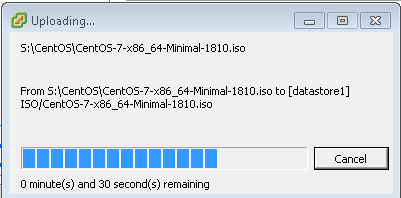
Create a new VM using the following options (make adjustments for your own environment or preferences):
- Configuration: Custom
- Name: <hostname of your choice>
- Storage: <select an appropriate storage location>
- Virtual Machine Version: 8 (or higher if your Hypervisor supports it)
- Guest Operating System: Linux – CentOS 4/5/6/7 (64 bit)
- CPUs: 1
- Memory: 4 GB (minimum 2 GB)
- Network: NICs – 1, Adapter – VMXNet -3, Any network that has Internet access, Connected at Power On – selected
- SCSI Controller: LSI Logic Parallel
- Create a new virtual disk: 50 GB (minimun 15 GB), Thick Provisioned Lazy Zeroed (default), Store with the virtual machine (default)
- Virtual Device Node: SCSI 0:0 (default)
- Select the option to Edit the virtual machine settings before completion.
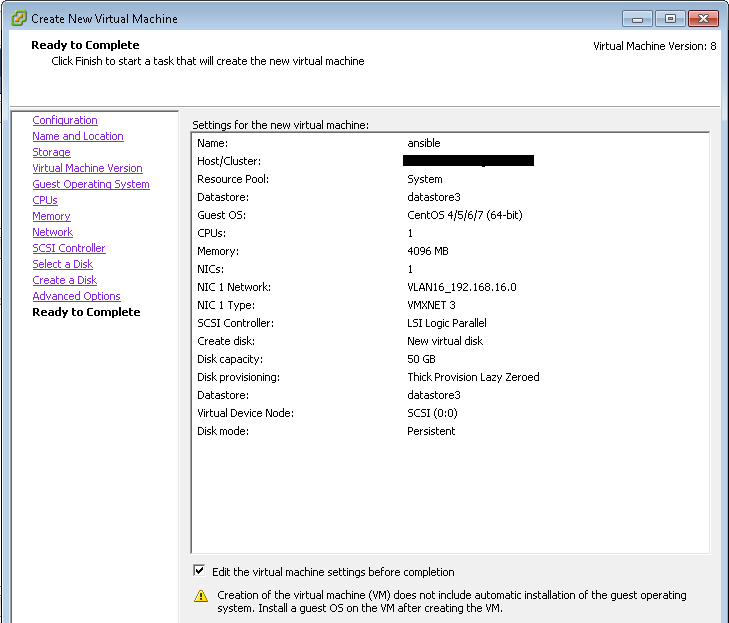
Connect the CentOS Minimal Install ISO image to the VM CD/DVD device:
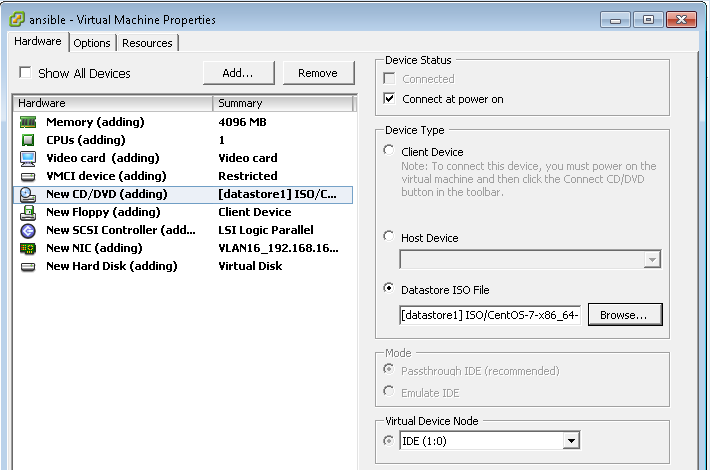
Ensure the Connect at power on option is selected.
Save your settings and power on the VM. Open a console window so you can install CentOS. On the first screen, take the first option (Install CentOS 7) to save some time if you are confident there are no problems with the ISO image you downloaded.
The minimum settings required for this installation are:
- Select the installation language
- System – Installation Destination (confirm Automatic Partitioning or use your own partitioning scheme)
- Note: If you use your own scheme, be sure to have the majority of the free space available at / or create and mount a file system at the tutorial data directory.
- System – Network & Hostname
- Set the root password
- Create an administrative user for Ansible
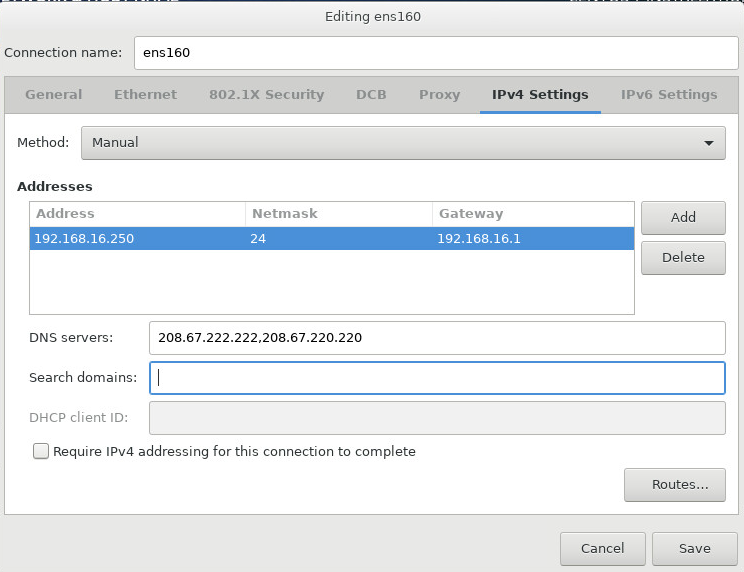
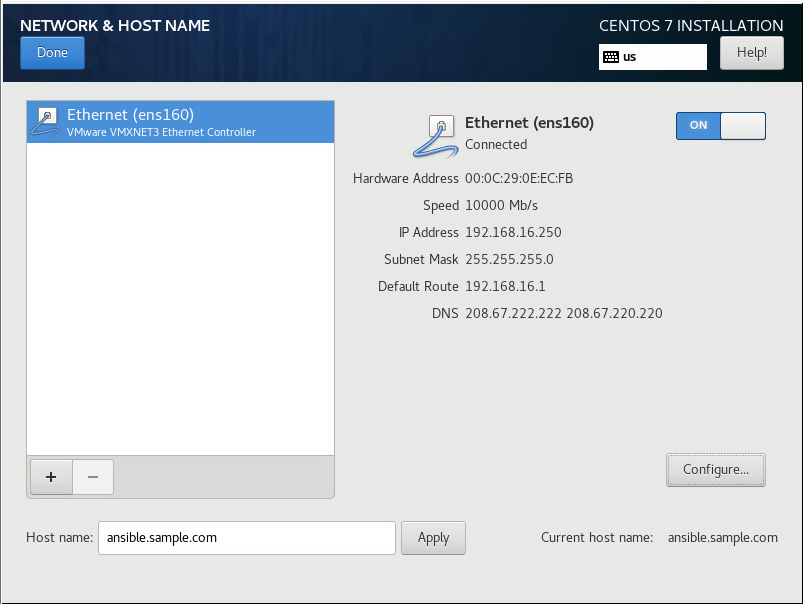
While the packages are installing, you can set the root password and create the Ansible Administrative user in the User Settings panel.
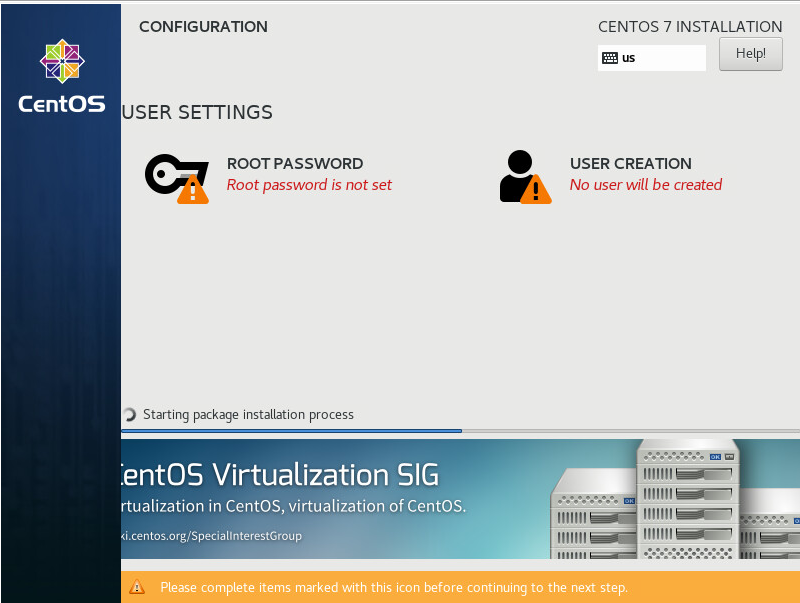
After you have set the root password, create the Ansible Functional User.
When this is complete, select Finish Configuration
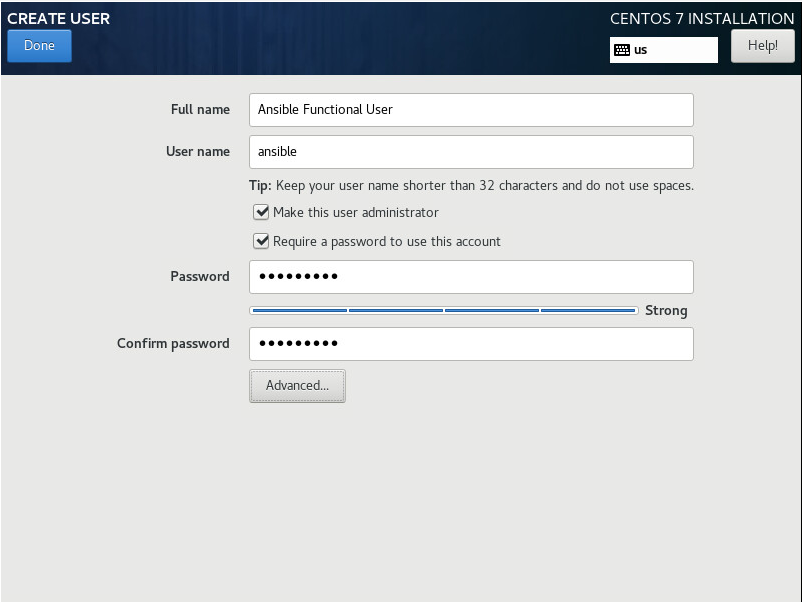
When the installation is complete, you can reboot the system. Close the console window after reboot.
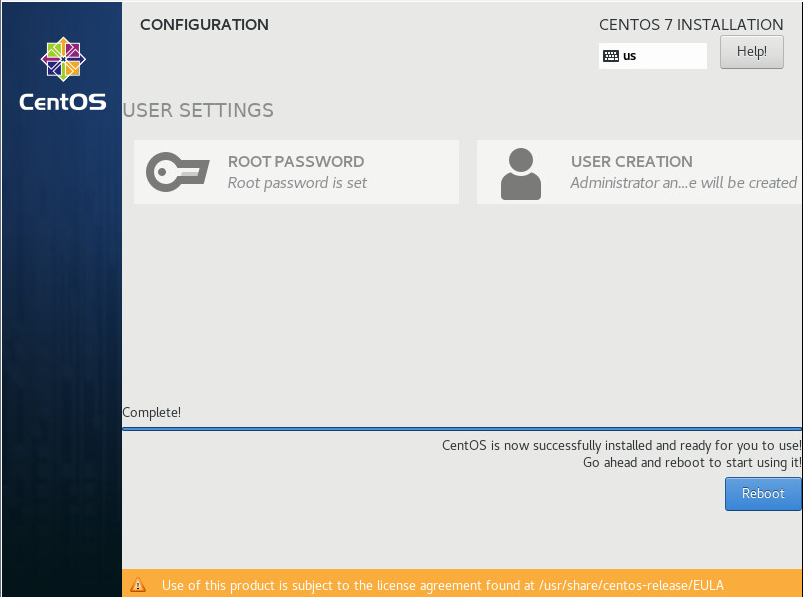
One of the first things I do on my lab systems is to remove the sudo requirement for a password. You can get the details to do this configuration at https://www.agix.com.au/sudo-without-a-password-centos-and-redhat/.
Leave Comments
You must be logged in to post a comment.